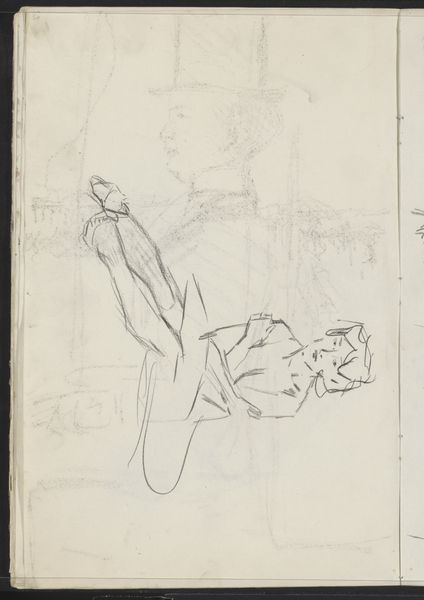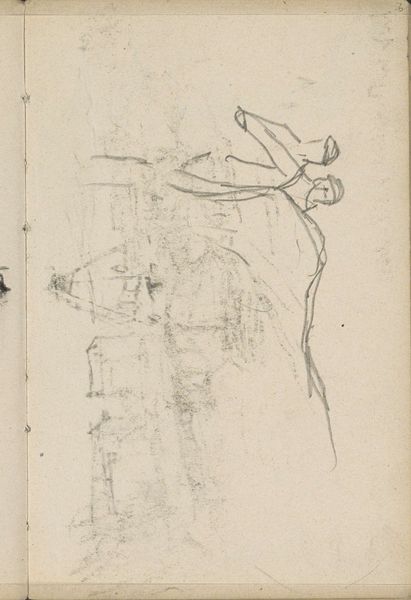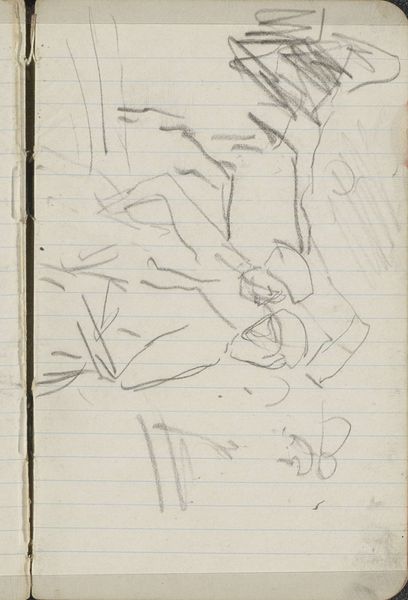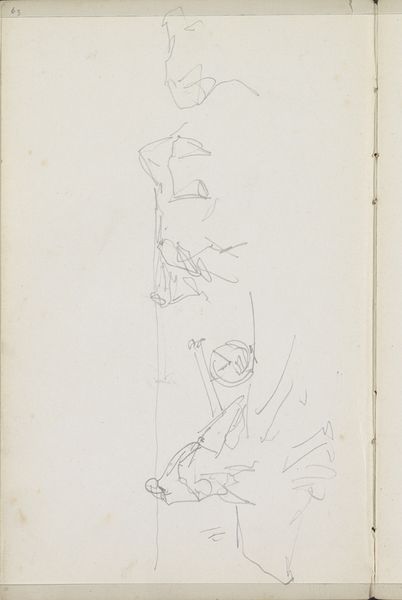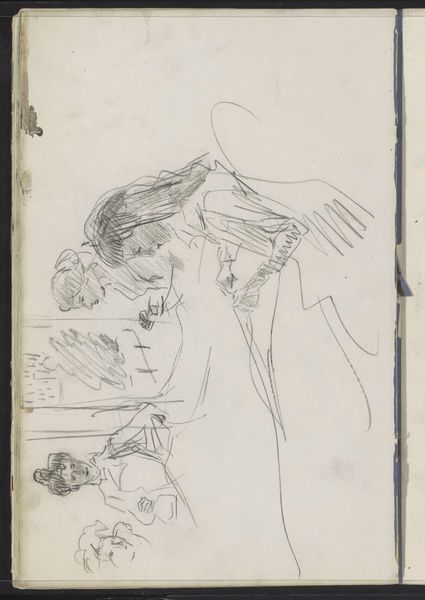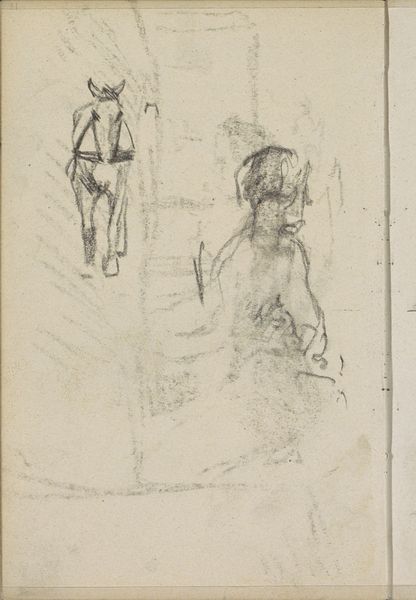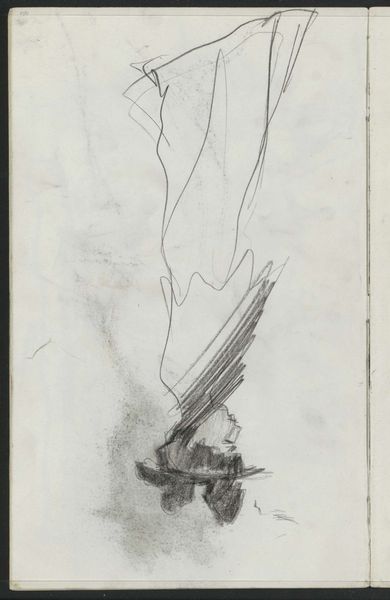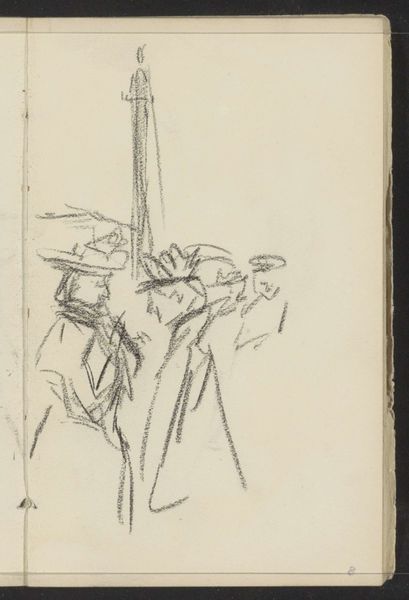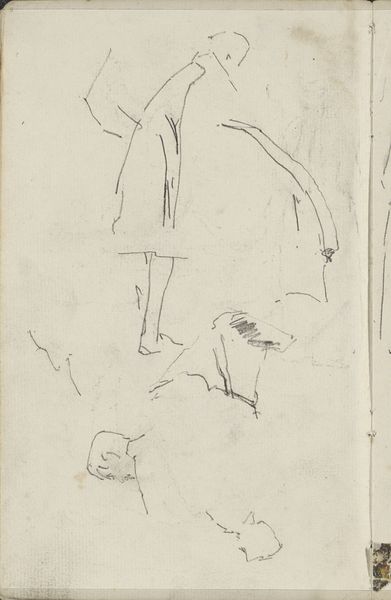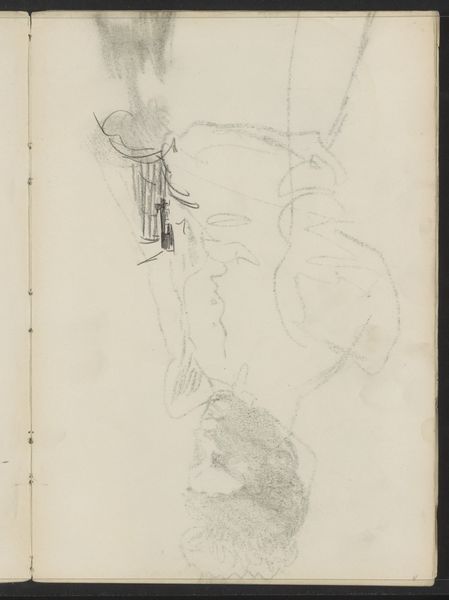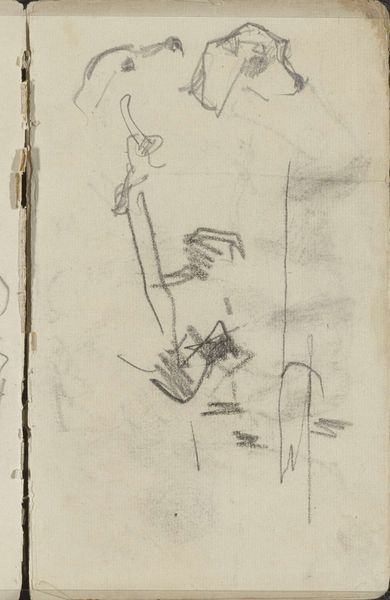
Copyright: Rijks Museum: Open Domain
Isaac Israels sketched these "Figuurstudies" with pencil on paper. Consider the recurring motif of the human figure, fragmented and incomplete. Here we see the emotional and psychological state of incompleteness. Notice how Israels captures the gesture, the movement of his subjects with a remarkable economy of line. It reminds us of the flâneur, of Baudelaire, observing the fleeting moments of urban life. Yet, unlike the detached observer, Israels seems to delve deeper, capturing not just the external appearance but also the inner essence of his subjects. The motif of the figure, often cropped or partially obscured, also appears in ancient Roman frescos, reflecting the impermanence of human existence. This recurs across time and space, from Pompeii to the sketchbooks of a modern artist. It suggests a collective memory, a subconscious recognition of our own fleeting existence. The human figure resurfaces, evolves, and acquires new meanings in different historical contexts.
Comments
No comments
Be the first to comment and join the conversation on the ultimate creative platform.
